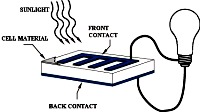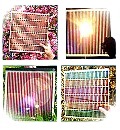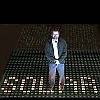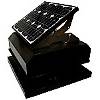Solar Panel Technology
New developments in solar panel technology promises cheap solar panels.
Once every two years the Millennium Prize Foundation awards $1.07 million to innovative technology that will have a beneficial impact on our quality of life.
The first inventor to receive this award was Tim Berners-Lee, who invented the World Wide Web.

The fourth winner to win the Millennuim Prize was Michael Graetzel (pictured above), who invented a solar panel technology that imitates how plants convert sunlight into energy.
Graetzel's solar energy panel is known as the "graetzel cell" and it's expected to revolutionize electricity generation within the next decade because it is not only an efficient means of converting sunlight into electricity... but it's cheap and easily mass produced.
Solar Energy Facts
Conventional solar panel prices are expensive because the materials used to make photovoltaic cells are costly to manufacture.
Consequently, consumers are hesitant to purchase solar power kits or solar panels for homes even though the long term benefits and the return on investment are positive.
For most of us, a ten-year return on the initial investment isn't something we can get excited about despite the fact that it's good for the environment.
Our needs are generally calculated over a shorter term because technology evolves and what could be a good investment today may be obsolete in a few years.
Graetzel's invention promises to solve this dilemma by providing a solar panel technology that is easily affordable and has a fast return on investment.
How Does Solar Power Work

In 1839, the French physicist, Edmund Bequerel, discovered that certain materials produced electric current when exposed to light.
In 1905, Albert Einstein explained how this worked, for which he won the Nobel prize for physics. What Einstein explained is known as the photoelectric effect.
All materials are made of atoms and these atoms have electrons orbiting them. Certain materials absorb photons of light (electromagnetic radiation) which then causes electrons to release from the atoms.
 A photovoltaic solar cell is made by sandwiching photoelectric material between positive and negative electrodes to create a circuit.
A photovoltaic solar cell is made by sandwiching photoelectric material between positive and negative electrodes to create a circuit.
Free electrons that are released by the photons are then captured by the electrodes to create an electric current.
The problem with solar panel technology is determining the most efficient photoelectric material to use in order to produce the most electricity from the least amount of light.
Some photoelectric materials absorb light better than others. Some of these materials release electrons more easily than others. Scientists are constantly searching for the most efficient photoelectric material.
On average, the solar energy efficiency rate of absorbing light and capturing free electrons to produce electricity in current materials, is around 12 percent.
This means that most of the photons and free electrons available for the conversion process - are wasted. Added to this problem is the fact that the most common material used (crystalline silicon) is very expensive.
Cheap Solar Panels 
Plants also absorb photons to free electrons through the process known as photosynthesis.
However in plants, the absorption of light and the release of electrons are separated into two processes as opposed to the one process used in solar cells. This reduces unnecessary waste and maximizes efficiency.
Photons are harvested by chlorophyll molecules that transfer the energy to a protein complex where electrons are released. These electrons are then used in the chemical reactions needed to convert carbon dioxide and water into oxygen and carbohydrates.
 Graetzel's solar panel technology imitates the processes used by plants by basically using one material for absorbing photons and another material for releasing electrons.
Graetzel's solar panel technology imitates the processes used by plants by basically using one material for absorbing photons and another material for releasing electrons.
The two materials are sandwiched together into a flexible film rather than a rigid panel.
The rate of efficiency for this solar panel technology is equal to (but expected to surpass) silicon based solar panels, and is cheaper.
Besides winning the Millennium Prize, Graetzel has also won the Faraday Medal of the British Royal Society, the Dutch Havinga Award, the Italgas Prize, the Mckinsey Venture Award, the Gerischer Prize, the Harvey Prize of Technion and the Balzan Prize for the Science of New Materials. He is a professor of photonics at the École Polytechnique Fédérale de Lausanne in Switzerland.
Related Articles: Solar Panel Technology, Solar Power Technology
Source: isic2.epfl.ch; solar-club.web.cern.ch Photo Credits: isic2.epfl.ch; science.nasa.gov; wikimedia commons

|
| New handheld device can identify you by scanning the veins in your hands. |

|
| New contact lens can release medication into your body. |








